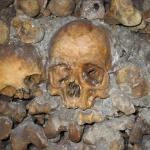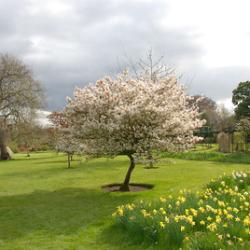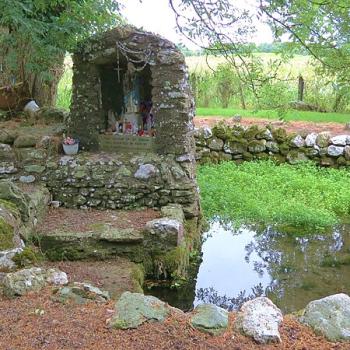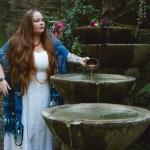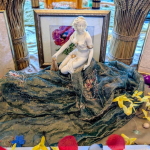Rituals Ancient and Modern
The timing of Samhain in early November would place it at the end of the grazing season, when cattle were being driven back in from their summer pastures [3]. During this time, the cattle that were unlikely to survive the winter would be identified and slaughtered [3][5]. The reunion of the herdsmen with their communities, combined with the abundance of meat and harvested crops, meant that this was a prime opportunity for community feasting. Samhain itself marked a ritual end to the harvest season, as is implied by a number of extant folk traditions [2][5]. For instance: all harvest work was to be finished by Samhain, at which point the Tribe’s contract with the Land expired and land spirits were no longer compelled to cooperate with humanity until Imbolc [2]. Notably, there were prohibitions on picking or eating anything that was left in the fields by Samhain, as they now belonged to the land spirits [5]. One regional tradition claims that such crops would be spat or urinated on by the púca on Samhain eve so as to claim them [5][9].
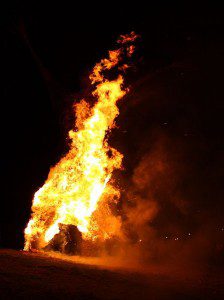
Prior to the coming of Christianity, the main Samhain religious practice was a rite that Alexi Kondratiev calls the “bonfire ritual” [2]. This was a ritual extinguishing of all household fires on Samhain eve, only to have them rekindled from a special ritual fire. At Ireland’s spiritual center of Tara, the ritual fire would be kindled on the nearby Hill of Tlachtga, the mythological burial-place of “an archetypal druid of immense power” [2]. Offerings would be cast into the fire [6], and brands lit from it. These torches would then move through the countryside, with all household fires being rekindled from them. In this manner, each household fire (in the entire country, if Geoffrey Keating is to be believed [6]) would be re-lit from the sacred fire near Tara. There were other Samhain bonfire rituals recorded [10], many suggesting that the smoke contained a healing or cleansing property. There were local traditions in Ireland where men and boys would scoop up the embers after the fire died down and throw them at each other. Ashes from the bonfire were considered to have protective properties against harmful spirits or magick [5]. In some areas, two bonfires would be erected and people (sometimes with their cattle) would walk between them to be purified [10].
Another major theme of Samhain was that of hospitality for the dead. Because the boundary between this world and the Otherworld were so thin, the dead could visit and be seen by the living. As a result, a large number of surviving folk traditions in Ireland, Scotland, and Wales emphasize hospitality to the dead. In Ireland, custom was that one should avoid leaving their home on Samhain eve unless absolutely necessary. If one did venture out, they should avoid looking behind them, as they would see the dead following them [6]. However, because the dead were out and about it was just as important that one make their home hospitable to welcome any dead relatives that may stop by. In Wales, while food was left outside to feed wandering spirits, inside the hearth was left stoked and chairs set out to welcome any familial dead. The door would be left unbolted to welcome these relatives in [6]. Similar variants on this tradition come from Ireland. In some cases, the door would be closed but unbolted and a bowl of fresh water put out next to the burning hearth. In others, an extra place would be set at the table and a bowl of special porridge made for the dead, with the door left open. More recent practices included leaving a candle in a window for each expected dead relation, as well as trips to visit and clean up family graves [5]. Morgan Daimler notes that in Irish tradition, the return of the dead specifically occurred on the eve of November 2nd, leading her to speculate that the return of the dead may have marked the final day of the old three-day-long Samhain celebration [5].



